
“Interconnection Nightmare in Hawaii”
The rapid expansion of residential grid-tied pv arrays in Hawaii is outpacing expectations or the ability to set rational policy. As a result there have been disruptions to industry and unforeseen costs to citizens due to policy changes without advanced notice. This is the “interconnection nightmare” to which the title refers. Contemplating how such policy changes would affect Washington State, they would be a nightmare here as well.
This article states that several of HELCO’s substations have already experienced reverse power flow without negative results.
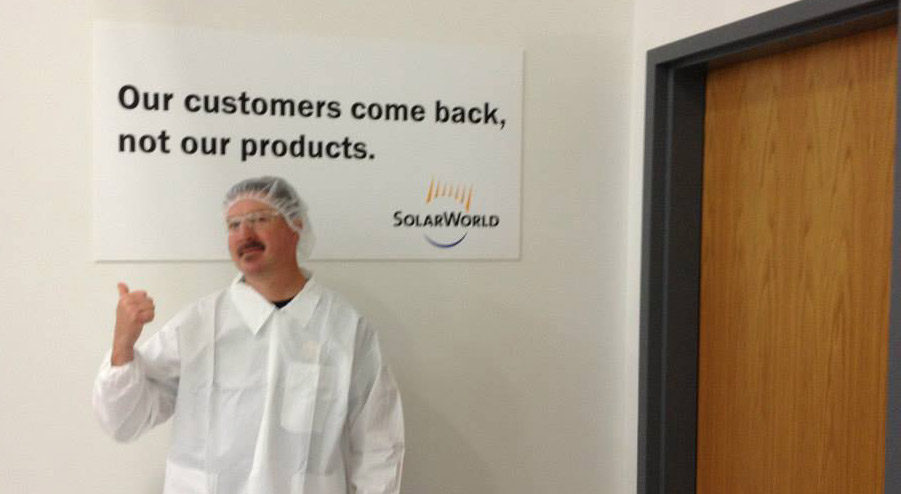
SolarWorld Manufacturing Process Information
The other evening, my kids were asking me how photovoltaic modules are made. I gave my best explanation on my own, and then also found several excellent resources on the web. This was one of the best videos (23 minutes, trade-show-commercial-style presentation):
Here is the process at a quick glance from SolarWorld’s website:
http://www.solarworld-usa.com/solar-101/making-solar-panels
The SolarWorld mono-crystalline modules we install are made at their facility in Hillsoboro, OR. This video is from their Freiburg, Germany factory mostly showcasing polycrystalline silicon module production. When I visited Hillsboro in early 2013, they were still growing the mono-crystalline silicon ingots there, and it was interesting to see the raw silicon material and the 8′ long x 8″ cylindrical ingots coming out of the kilns. Since then, they have idled the kilns in Hillsboro and are getting the wafers from the factory in the video in Freiburg.
The quality of what is shown in the video and the fact that this company is a major global manufacturer with vertical integration and in-house quality control, is one of the main reasons we are happy to have partnered with them as an installer of their US-made products.
They wouldn’t allow pictures on the factory floor, but they made a better video than I could have anyway.

2013 in Review – 2014 Forecast
It was a very good year for solar in Western Washington. Not only did the weather cooperate, showing performance equal to any year since we have been monitoring inverters, but the pace of installation of new solar quickened significantly. While we do not have any state-wide figures available at this point, we can say that locally we installed 63 grid-tied pv projects totalling 383 KW. This represents a 70% growth in our KW installed over 2012, and also represents about the limit of what we feel we could do with current staffing. We are looking to accommodate more growth this year by adding three new people to our team.
Last year we added one new employee; John Fleming has now been with us nearly a year, and is bringing a great engineering mindset to our site evaluations and system designs. On an administrative note, we lost our reasonable ability to provide a group health plan for our employees. The premium increases were too high compared to what our employees could get for themselves on “The Exchange”. So we gave everyone raises b y dividing up our savings on health care premiums and cancelled our group health plan. It’s hard to see how that is a good result of the ACA, but we’ll be continue to be patient and review our options again next year.
The year 2013 marked the first year that a significant number of our clients utilized local financing to pay for their systems. Although some financing has been available for quite a while, it has never been optimal and we had not previously encouraged its use. Now there are great local financing options available from several local lending institutions, which include low interest rates in recognition of the energy savings, high enough loan amounts to put up large pv systems, and the lack of leans against the home (some of these loans are secured by the pv system only.) Call us to learn more about those options or review this page https://powertripenergy.com/fininc.htm#Solar_Financing
Our three Solarize programs each had the highest participation rate yet in the three years we have been running them. Solarize Kitsap, Solarize Port Townsend, and Solarize Sequim all resulted in major savings to clients through the group purchasing rebates, and we also installed a slew of complimentary electric vehicle charging equipment as another benefit to participants who installed 8 kw or larger systems.
More and more of our clients are driving EVs and producing their own electricity with solar. In our family at home we began to lease a Nissan Leaf, and here at Power Trip Energy, we leased a Toyota RAV4 EV – both all electric, and with 50-75% of that electricity generated from local solar power.
In 2013 we continued to see slight price decreases in modules and slight efficiency increases. Due to the high local market demand, some local manufacturers struggled with lead times, but our supply from international industry leaders remained reliable. We utilized some newer products offering module level power management and monitoring, and this continues to be a strong trend in the industry. As we keep an eye on the state of the industry and introduction of new products, we retain the primary goal of using the highest quality equipment from the most reliable manufacturers as the best way to ensure long-term value for our clients.
Looking ahead to 2014, we are seeing continued strong interest locally. Our 2014 Solarize Kitsap program is off to a strong start and enrollment remains open through March 31, 2014. There are several upcoming orientation sessions, the schedule is here: http://www.solarizekitsap.com As mentioned above, we have remodeled our office to accommodate new staff and are planning to add three new positions this year. The national and local trends are that solar is becoming mainstream. Our goal of becoming “just another trade” may be within reach.
The existing state of the market is amazing in terms of the lowest prices and highest quality equipment we have ever seen, combined with several incentive programs in place for another couple of years: the 30% Federal tax credit (until 2016), the Washington State sales tax exemption (until 2018), and the annual production incentive payments available through the Washington State Renewable Energy Cost Recovery Program (in place until 2020.) There has never been a better time to install solar, and depending on whether those incentives are extended, we may not see a moment like this again. If you have been considering installing grid-tied pv, give us a call or learn more at https://powertripenergy.com
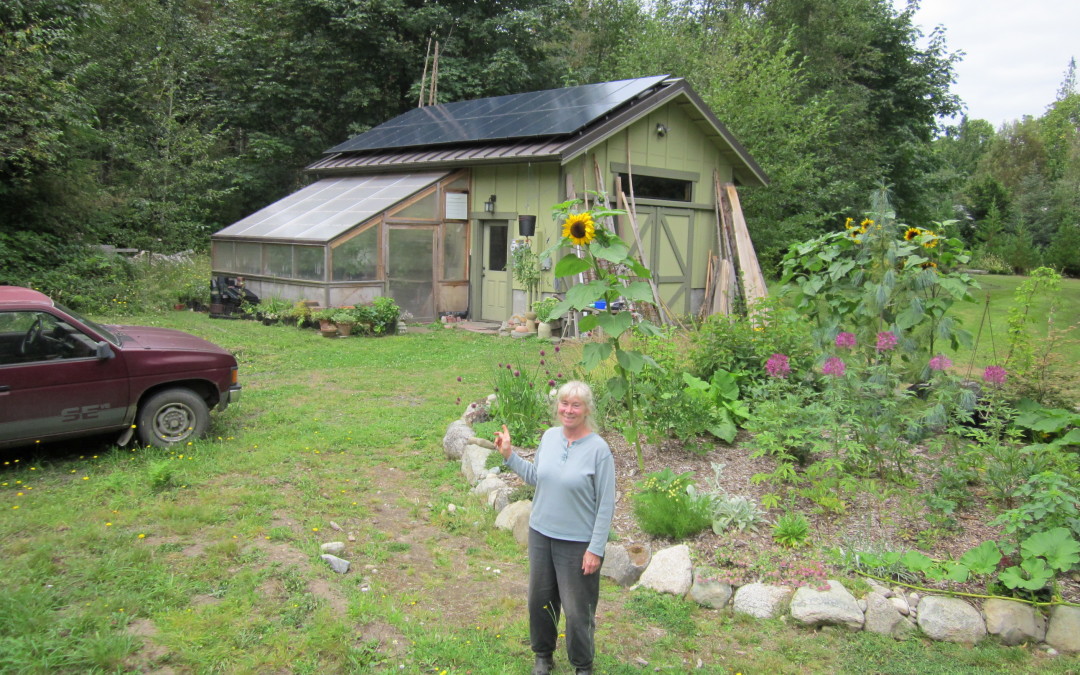
US Poised to Overtake Germany as World Leader in Solar Installations by End of Year
The increase in solar installations nationally is continuing a very strong growth curve in both the utility and residential arenas. Full data with impressive charts are available at this link from SEIA.
http://www.seia.org/news/us-solar-industry-records-second-largest-quarter-ever
Locally, here at Power Trip Energy Corp, we increased the amount of pv installed by 70% over last year. We are hoping to continue to increase at that pace again next year. This year we added one new person, and are planning on adding three more people to our team next year to facilitate this growth. We have added office space and we have sufficient warehouse space in order to accomplish those goals. With continued price decreases in the cost of solar modules, and now with advantageous financing available, we have crossed a point beyond which the installation of grid-tied solar on a sunny roof is now economically compelling, regardless of the environmental benefits, increase in house value, and personal liberation.
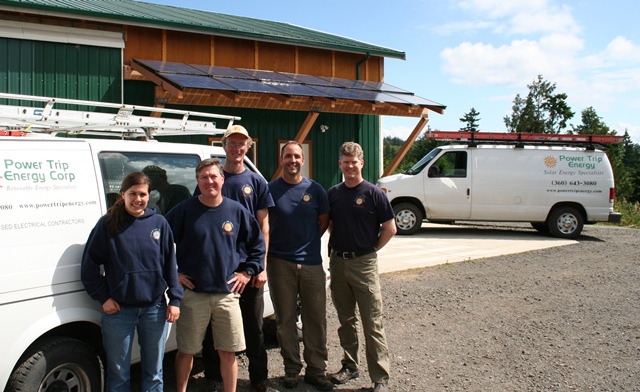
More about The Other Hydrogen – with Stephen Crolius
“Local Energy in 2025: Electricity and ‘The Other Hydrogen’”
The programs are sponsored by Power Trip Energy Corp., Sunshine Propane, Alaska Power & Telephone Co., the Port of Port Townsend.

Streamlined Permitting Checklist, Permit Exemptions for Solar, and the Climate Action Plan

The New Solar World SunModule Protect 265
It may not look like much on this rack at the front of a conference room, but this new SolarWorld SunModule Protect is a major improvement to an already industry-leading product. The use of 2mm glass as a replacement for the standard film back sheet will result in great improvements in durability. We have already seen successful implementation of similar glass-on-glass technology from the Washington-based start-up Silicon Energy 4 years ago and the NREL tests have supported the claims of durability. SolarWorld is now placing an unprecedented warranty on this product – a 30 year warranty of less than 0.35% performance degradation, meaning they guarantee they will generate at least 86.5% of the rated power 30 years from now.
We recently got a call from a lady in Kitsap County who installed Arco 30 watt modules in 1982 (31 years ago.) She claims today she is seeing about 85% of the initial power production from these modules. Through mergers and acquitions, the ancestry of SolarWorld reaches back to Arco through Siemens, and Shell Solar, now with a pedigree of over 40 years of US pv manufacturing.
We are proud to be Authorized SolarWorld dealers, found out today only 10% of the applicants to the program make it in.
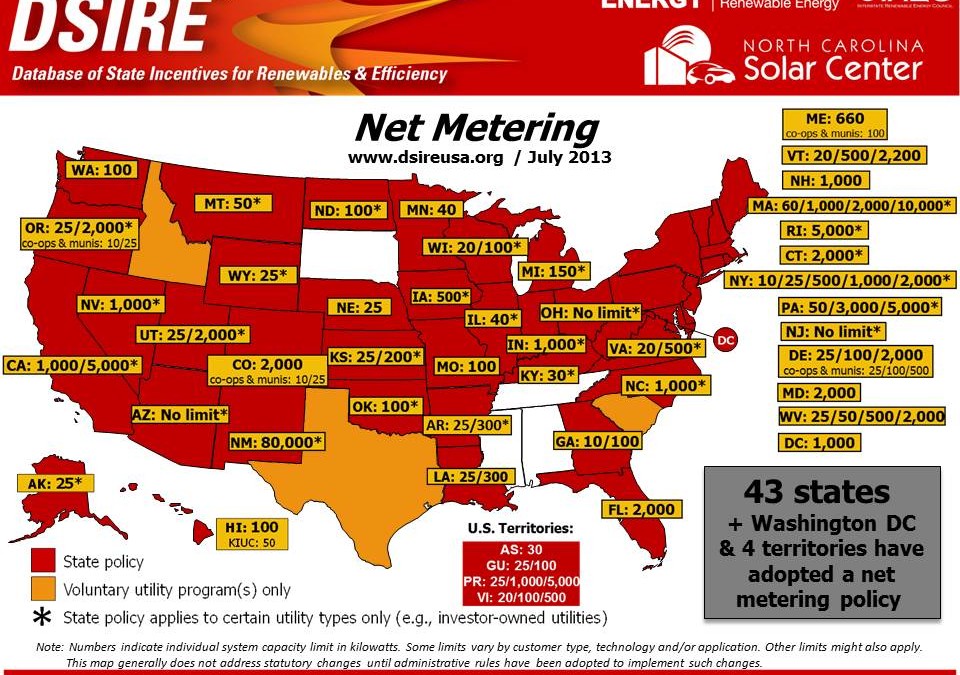
Net Metering Policy Map by State
This map was just sent to me and I thought it was worth sharing. The credit for this image (and lots of other great research and resources) goes to www.dsireusa,org.
Net metering is now policy in nearly 90% of the US. Net metering refers to the requirement that utilities must compensate you at the same retail price for the electricity you provide them as what they charge you per kwh. The numbers denote the limits to the size of a net metering system in each state (in kilowatts.) Here in Washington, our 100 kw limit is preventing the development of many mid-sized or large commercial systems. The residential and small commercial markets we serve are still relatively immature compared to many other states, but on a healthy growth curve, ie 70% annual growth in number of new systems installed last year, and 50% growth in average system size.
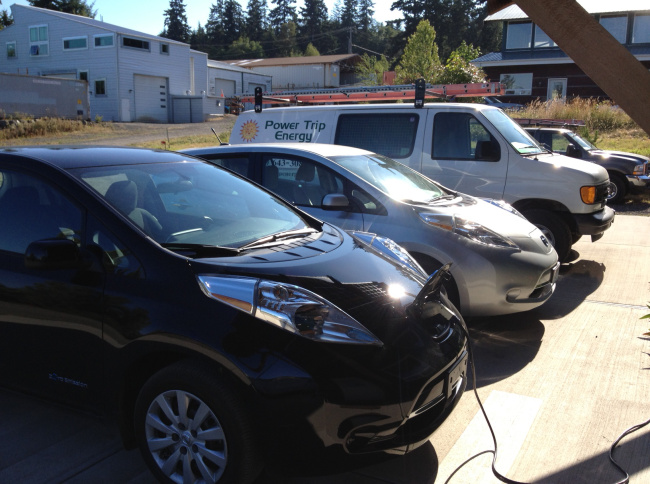
Comparison of Nissan Leaf and Tesla pure electric vehicles to hybrids, state by state
This is an interesting study that performs a Life Cycle Analysis of hybrid and electric vehicles, taking into account the cleanliness of the grid in the 50 US states, and also the embodied energy and emissions in the manufacturing process of various vehicles. The authors rightly conclude that the benefits of electric vehicles are dependent on the source of electricity they use to charge.
A couple of things the study does not appear to address are the time of day when cars are charged (many grid locations have higher CO2 emissions during peak loads) , and the presence of any distributed energy generation at the charging location. I am an advocate of marrying electric vehicles with grid-tied pv at the charging location, I think this accomplishes the cleanest charging possible, and also trumps the economics of charging from standard grid-power (not to mention filling up at the gas pump.) It also seems that as more aggressive RPS targets continue to kick in across the nation, the sources of grid electricity will be generally emitting less carbon over the coming years.
Here at Power Trip Energy, we have just ordered a Toyota RAV4 EV, which will replace the bulk of the driving we are currently doing in a 23 year old Toyota pick-up truck and a 21 year old Chevy Astro van. Although this vehicle is smaller than those other two, with the back seat down and a folding ladder in the back we will be able to use this vehicle for site evaluations and other light duty work on single story buildings within 50 miles, which describes about 75% of our projects.
We have 4 kw of grid-tied pv, currently generating about 75% of our electricity here at the Power Trip Energy shop, and we will more than double that generating capacity by the end of the year. This will cover the additional electrical consumption we anticipate from our own electric vehicle and from the other EV drivers who are using our free public charging station to recharge. As we are now seeing more occasions when there are two EVs here simultaneously, we will be adding a second charging station when we add the additional pv.
While we are moving forward with what we perceive to be the cleanest smartest energy generation and usage realistically feasible, we look forward to reading the studies of more researchers. We also look forward to installing pv systems and EV service equipment for you.
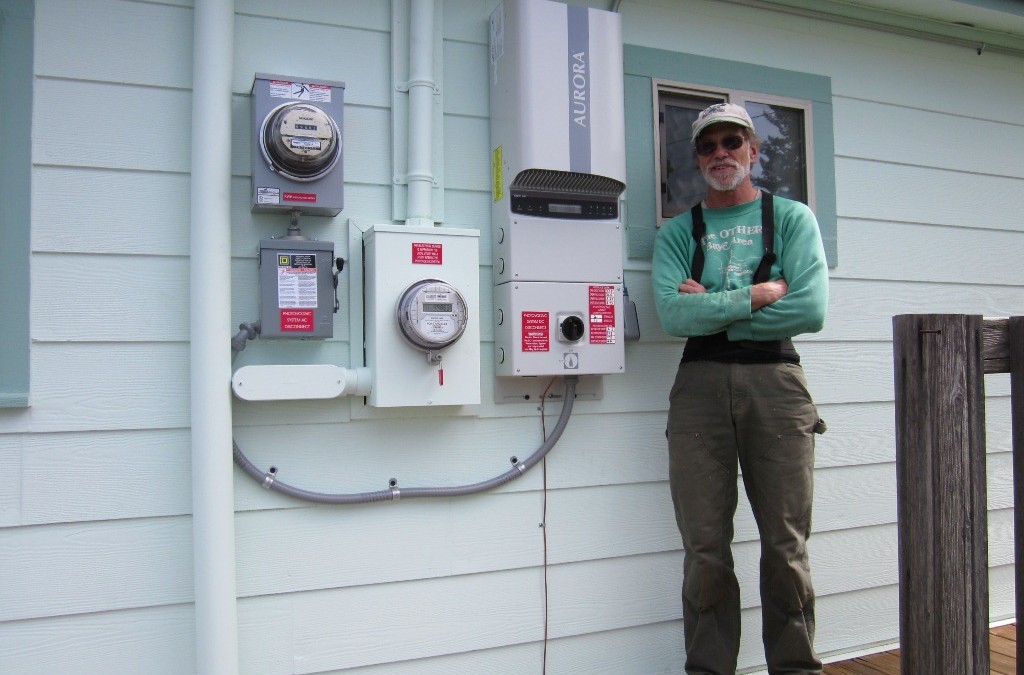
Global inverter rankings
It is interesting to see how our local practices and observations align with the global market. Nearly all of our projects are served by 4 of these top 10 inverter manufacturers. I can offer quick feed-back on SMA, Power One, Fronius, and Enphase from the small-scale residential grid-tied perspective.
We have been using mostly Power One inverters since they began manufacturing domestically in Arizona in 2010, due to the high efficiency of their transformerless inverters, and the presence of dual MPPT inputs. The two different arrays here at Power Trip Energy are served well by a single Power One 4.2kw inverter.
Prior to 2010 we had used nearly exclusively the SMA SunnyBoy inverters, including two at my house, and the systems at Steve’s and Jeff’s homes. SMA now has an updated product line that is transformerless, dual MPPT inputs, a 15A 120 VAC auxiliary for some emergency back-up, and improved data monitoring. We just installed ou first project using a 5kw SunnyBoy TL series, and if the product proves itself satisfactorily, SMA appears poised to take back some of our market share from Power One.
The Fronius product line is fills some niches among our projects, with their single inverters in the 8-11 kw range, and their three-stage inverters are intriguing.
The fact that Enphase is continuing to increase market share is not surprising despite the high price, due to their first mover status in the micro-inverter segment, and their effective marketing. We continue to be underwhelmed with their reliability and the over-stated ease of installation.